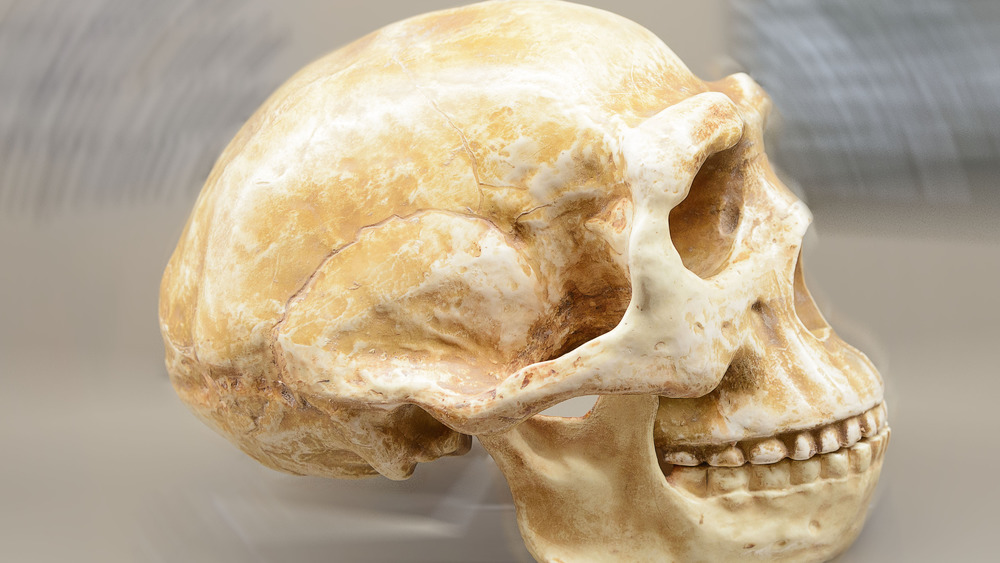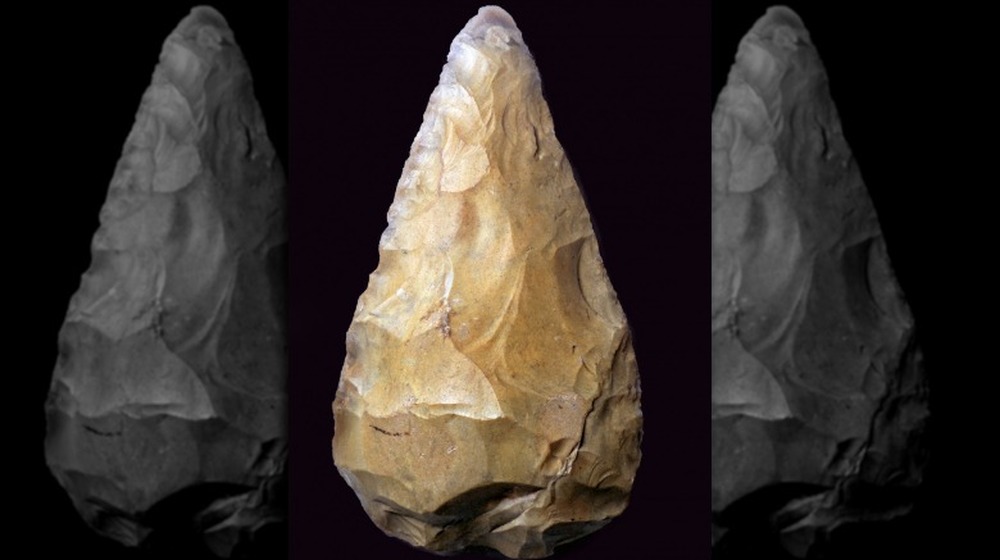The Truth About The Earliest Known Humans In Asia
Humans today would be nearly unrecognizable to our early prehistoric ancestors. We've grown tall and wide and occasionally weird. We've lost a lot of the hair our early ancestors wore to survive harsh climates, back before clothing and frills. Our brows have shrunk and our craniums have swollen. We've become a new species of human.
One of our early cousins, the Neanderthals (Homo neanderthalensis), has become a derisive insult that implies someone is acting like a "caveman." These "cavemen" though, are some of the earliest members of the human family to appear outside of Africa, known to have inhabited much of Europe and Asia during the Ice Age, as far back to 200,000 years ago, according to Live Science. Seems pretty old, right?
It has nothing on one of our older cousins. We're talking about Homo erectus. Erectus looked a bit different from Neanderthals and modern humans, but you probably wouldn't notice they're a different species if you ran into one on the street. They grew to nearly average modern human height and had similar proportions, but, according to The Natural History Museum, London, they carried more muscle, had wider hips, and large brow ridges. Erectus is believed to have been the first of the Homo species to leave Africa, around 1.7 million years ago, and expanding primarily to Asia, although new discoveries may have pushed that number even further back.
A new discovery
Up until 2018, it was generally accepted that Homo egaster – Homo erectus before the species left Africa — migrated to Asia 1.7 to 1.75 million years ago, leaving Homo erectus to populate the continent, according to the Australian Museum. That's about 1.5 million years before modern humans are thought to have made their way off the African continent. To be fair, Sapiens weren't around for most of that time, but with a paper published in 2018, an additional 250,000 years has been added to the Erectus migration timeline.
The earliest prehistoric human fossil found outside of Africa, Homo erectus remains, had only dated back to 1.85 million years ago, according to The Atlantic. Not only is the new evidence the oldest Erectus evidence, but it rewrites everything we thought we knew about early human migration. To put this into perspective, that 250,000 years translates to roughly 10,000 generations of early humans. The evidence also puts this first known group of Erectus about 3,500 miles to the east of the fossils from 1.85 million years ago, showing they traveled more than the distance from California to the Atlantic ocean further than their 10,000-times-great grandchildren, another wrench in thrown into the migratory works. It's a pretty impressive feat.
The evidence could be controversial
There's one little (or big) problem with this new early human migratory timeline: It's probable that not all scientists will accept it. Why? Homo erectus, as pointed out by The Natural History Museum, London, were the first known hominids to use what are known as Acheulean tools. These tools were a step up from Erectus's forefathers, who basically used rocks of different shapes to smash or hack at things. Acheulean tools are stone tools, usually handaxes, that have been shaped on two sides via knapping or chipping. The tools had a handle side and sharpened edges. Long story short: It was this method of shaping tools that prompted the 2018 discovery.
The scientists who originally published this new Erectus timeline in Asia didn't find new skeletal remains. What they did find were special stone flakes in sandy deposits. These stone flakes, according to The Atlantic, could have only been made by smashing rocks together, a method used by hominids to construct Acheulean tools in other parts of the world. To the scientists who discovered them (and many others), this is enough evidence to confidently assume Erectus was responsible, but others might not see it that way. Many scientists want to see harder evidence, like prehistoric human bone fragments, teeth, or anything else that might help point to a specific species. Until then, the present evidence amounts to an educated guess.


